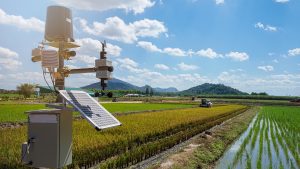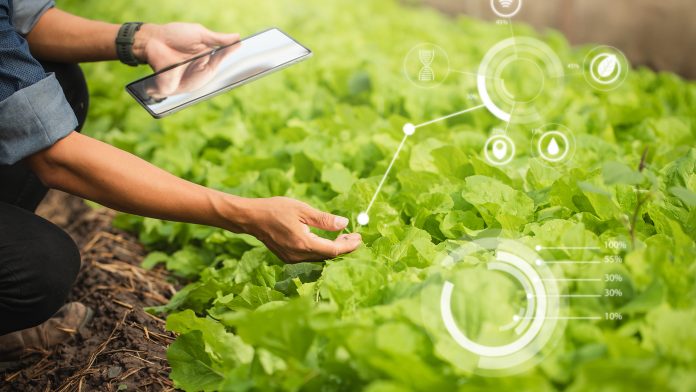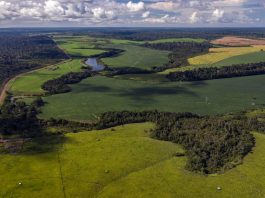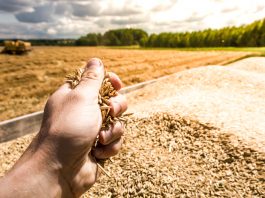Smart and connective technologies such as Artificial Intelligence need to be fully explored to ensure food security for the growing global population.
Led by biosensing engineer Azahar Ali at Virginia Tech, a review article has stated that connective technologies will bring about a fourth agricultural revolution.
In particular, the researchers outline the three technologies that will advance climate-smart, precision agriculture: wearable sensors, IoT-enabled smart devices, and Artificial Intelligence.
The article, published by Advanced Intelligent Systems, explores how these technologies could monitor food security and safety worldwide.
Current efforts to expand food production are inadequate
Accurate early monitoring should be prioritised to safely and sustainably feed the fast-growing population. By 2050, the population is expected to be nearly ten billion and will require 50% more food to maintain the world’s food supply chain.
According to the 2023 GAP Report, the growth of global agricultural productivity has contracted significantly. Current efforts to sustainably expand food production are also insufficient.
To expand food production, therefore, connective technologies are required, but to tap into their full potential, collaboration is needed. Agronomists need to work with engineering, medicine, and materials science to bring about agriculture’s next era.
“There’s a huge gap in this kind of collaboration,” Ali said. “I develop sensors, but I need to collaborate with experts in Machine Learning. We need to engage in more collaboration to solve the food crisis.”

The potential of food sensor technology
Food sensors can measure toxins, humidity, pH, freshness, temperature, pathogens, and contaminants. These factors must be monitored to ensure that food safety and quality are maintained.
When paired with other connective technologies, food sensors can be enhanced. For example, these sensors can be paired with smart devices to enable food, livestock, and plant sensing systems to collect data in real-time and at a large scale.
This data could then be generated by next-generation networks.
The use of AI to enable food security
The team believe that AI could streamline data analysis through automatic data processing. The technology could take on the volumes of data generated by smart sensors.
Combining connective technologies, there is potential for predictive analysis. This will allow producers to anticipate challenges such as changes in weather conditions and disease outbreaks.
Current efforts to integrate multiple connective technologies
In the new paper, the team outline how the agriculture industry is currently integrating multiple connective technologies.
For example, electrochemical sensors have been developed to detect disease biomarkers in cow’s milk, orange juice, and apple juice.
Scientists have also used microneedle-based integrated plant sensors with smartphone-based 3D-printed devices to detect viruses in tomatoes.
Challenges of using technology in the fourth agricultural revolution
Despite the promise of these connective technologies, there are a number of challenges that need to be addressed before they are implemented.
These include security concerns in data collection using smart sensors, high costs of the technology, and internet connectivity issues when using the devices in rural and remote areas where many farms are located.
To solve these challenges, Ali circles back to collaboration, not just amongst scientists but with policymakers and farmers. He concluded: “To solve our common problems, we need to work together.”









